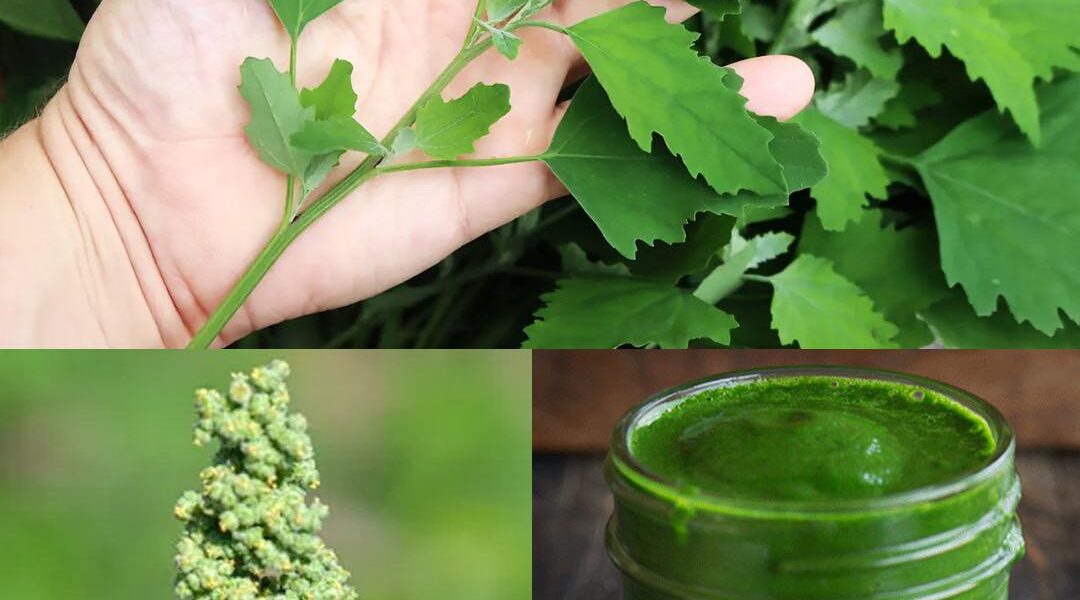27.08.2024
Chenopodium Album (Lamb’s Quarters): Discovering Its Nutritional and Medicinal Virtues
Lamb’s quarters, also known scientifically as Chenopodium album and often referred to as wild spinach, goosefoot or amaranth, is an herbaceous plant with a rich history, offering a variety of culinary and medicinal applications. Although often classified as a common weed, this humble green plant is packed with health-promoting properties, making it a remarkable addition to herbal diets and wellness repertoires.
1. Health Benefits:
- Nutritional Value: Lamb’s quarters is a nutrient-dense superfood, abundant in vitamins A, C, and K, as well as minerals such as calcium, iron, magnesium, and potassium, making it a strategic choice for improving health.
- Antioxidant properties: It is particularly rich in antioxidants such as beta-carotene and quercetin, which help protect cells from oxidative damage and may reduce the risk of chronic diseases such as cancer and cardiovascular disease.
- Anti-inflammatory Action: Lamb’s quarters demonstrates anti-inflammatory capabilities, making it a potential natural remedy for conditions such as arthritis and inflammatory bowel disease, thereby relieving inflammation and associated symptoms.
- Digestive support: Traditionally used to promote digestive health, its richness in fiber helps regulate intestinal transit, prevent constipation and promote intestinal health.
- Helps with weight management: Its high fiber content promotes feelings of fullness, which can help reduce calorie intake and support weight loss efforts.
- Blood Sugar Regulation: Preliminary studies suggest that lamb’s quarters may help moderate blood sugar levels, making it a promising natural supplement for people with diabetes or at risk for developing the disease.

2. Culinary uses:
- Salad ingredient: Young leaves can be added to salads to give them a refreshing, slightly tangy flavor, raw or blanched, alone or mixed with other green vegetables.
- Alternative to green vegetables: It can be used as a replacement for spinach or kale in various recipes, whether sautéed or steamed, thus adding flavor and nutritional value to the dishes.
- Smoothie Enrichment: Incorporating lamb’s quarters into smoothies can enrich them with nutrients, pairing well with sweet fruits.
- Enhancing Soups and Stews: It can be added to soups and stews to enrich their flavor and nutritional value.
3. Medicinal uses:
- Infusion: The leaves can be infused to obtain a soothing digestive drink, useful for relieving digestive disorders and oxidative stress.
- Poultice: A poultice made from the leaves can be applied to the skin to relieve skin irritations, insect bites, rashes and minor burns.
- Tincture: For more concentrated medicinal uses, tinctures can be prepared, although the advice of a healthcare professional is recommended, especially if taking concomitant medications or if there are pre-existing health conditions.
4. Precautions and considerations:
- Accurate identification: It is crucial to correctly identify the plant to avoid any confusion with harmful species.
- Risk of allergy: A gradual introduction is recommended to detect any allergic reaction.
- Harvest Quality: It is important to harvest the plant in uncontaminated and chemical-free areas.
- Professional Consultation: It is essential to consult a healthcare professional or certified herbalist before using lamb’s quarters for medicinal purposes, especially for those with chronic health conditions or taking medications.
Lamb’s quarters, once overlooked, is now recognized for its many health benefits and versatility in the kitchen. Whether it’s to improve nutrition, treat specific health issues, or simply discover new flavors, this plant deserves to be explored carefully and with the informed advice of experts for its medicinal uses.
